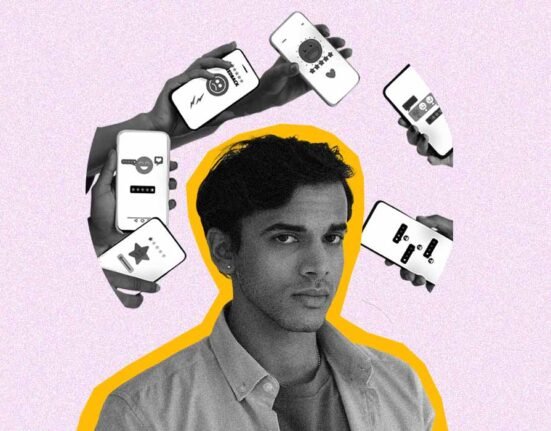The relentless pursuit of image—luxury cars, designer labels, curated social media lives—often hides a cost of psychological and financial stress. So many forego savings and stability to show success, motivated by social comparison and the narrative that the wealthy are obvious. In reality, good financial health depends on security, not spectacle. Certainly, the pressure to look rich will result in anxiety, debt, and isolation when we are trying to appear to be someone whom we are not. Recognising this is understanding that the real wealth is built in between, quietly, but most importantly, with discipline, not with display.
The Social Pressure to Appear Successful
The need to seem successful inevitably overspending. Instagram and TikTok overspend and provide A platform for status-seeking purchases. People conflate self-worth with possessions. Hence, people purchase luxury items, designer clothes, and ostentatious vehicles as a means of demonstrating they have made it. Research indicates that increased social media usage is associated with materialistic values and accompanying brand consumption, as users seek social validation through consumption (Ozimek et al., 2024; Psychology Today, 2024).
Further, personal and social prestige related to how an instamatic or frivolously expensive product reflects one’s self-image organizations causes cognitive biases, such as present bias (immediate gratification vs. deferred security), personal factorial optimism, and peer effects; the “keeping up with the joneses mentality,” reflects the cognitive class bias (a tendency to gain indirect comfort at the expense of others), or simply the mental/y social effect of seeing to compete with one’s peers within their social group to maintain other social, on-demand, or impulsively necessary behaviors that sustain peer based behavior.
Read More: The Need to Appear Better: Understanding the Psychology Behind Showing Off
Trapped by Appearances: The Cost of Looking Successful Online
Conditions for presentation bias, including peer effects, are significant amplifiers or variations of troubling behaviours, all of which contribute to businesses creating desirable, consuming lower quality products, but relatively less expensive traditional products. Moreover, it is a common observation that young females, especially females over years of increasing/evolving use, have simply saturated social media in that women 16-24 spend almost 3 hours per day on social media use. They are therefore the most vulnerable demographic.
Conversely, while individuals assume everyone notices something they just bought or is valuable to their social presence, the famed “man in the car paradox,” few to no one notices or is impressed, often, those who do guess purchasing or casually own, likely have their own social pressures to practice. People tend to believe that others are taking note of their belongings, but the “man in the car paradox” shows that most people are not. Even those who do take note of them are typically in the same game. In the end, this game of prioritising image over substance results in debt, anxiety, and misery, as they hide their financial instability behind the image of being secure.
Read More: The Psychological Toll of Financial Instability on Freelancers
Emotional Rewards and Cognitive Dissonance
Investing in project success results in transitory emotional gratification, such as a temporary uplift of self-esteem, confidence, or belongingness. To live a life of luxury, or to create a life of luxury, appears to be a type of social acceptance or validation for many individuals. In a world dominated by social media, visibility is replaced by worth. Ultimately, self-worth and social acceptance potentially align with the items an individual possesses; thus, spending could be linked to unresolved issues of insecurity or trauma, e.g., investors in luxury goods can express to themselves or others, “I am enough.”
In addition, the dopamine released during consumption often alleviates the cognitive dissonance between present-day issues and perceived progress (i.e., “I can afford the item”); however, this dopamine high is short-lived. Once the dopamine settles down, reality occurs (i.e., bills come, savings diminished), raising dissonance, a mental struggle between actual finances and the identity displayed by someone who feels like an imposter. Instead of attending to a root emotional need, an individual experiencing dissonance spends more on items they cannot afford, which continues to present unhappiness and potentially compounds as dissonance.
Over time, perhaps weeks to months, the dissonance facilitates an undermining of psychological health, or an equivalent, replacing time-limited happiness with chronic stress that manifests as a non-whole self.
Debt, Stress, and the Mental Health Toll
Trying to look good financially can come with serious psychological consequences, contributing to chronic stress and feelings of shame and low self-worth. The pressures of having to present a façade of financial stability in the face of mounting debt can lead to anxiety and a perceived loss of control. Sixty-seven per cent of people are somewhat or very likely to go further into debt when under stress, which perpetuates the cycle. Even when payments go unpaid and interest continues to accrue, feelings of guilt and being overwhelmed represent increased emotional suffering.
Sixty-five per cent of respondents say they feel guilty about buying items they don’t need or at least want. Fifty-three per cent say they’re overwhelmed by their spending patterns. This subjective version of financial strain—the feeling of being financially constrained and experiencing a level of emotional hardship—is a better predictor of financial distress than simply someone’s income (Ryu et al., 2022). Shame breeds guilt, robs hope, and diminishes life satisfaction. Comparisons between someone’s current life and the life they project. An imagined success or opportunity life perhaps seen on social media, feeds the feeling of shame. Shame correlates positively with anxiety and depression, while hopelessness correlates positively with financial distress (Gladstone et al., 2021).
Many spend money on impulse—either through online shopping or in-store purchases; the temporary feelings of relief or satisfaction come with feelings of regret or stress on future bills and expenses. Even further stripping away their approaches to mental well-being. This creates turmoil around advancing self-esteem, confidence, level of comfort with others, and the perception of reality versus the rope they’ve presented. When individuals contend with having to present a polished self while prospecting with their minds a life of despair, the person experiences withdrawal from others. This can show up in relationships, showing strain and ultimately a suicidal way of thinking, especially among the young adult age group.
Read More: Feeling Shame Is Not Good for Your Mental Health?
Breaking the Cycle: Building Authentic Self-Worth
Overcoming the cycle of image purchasing begins with separating self-worth from what society conveys. Think about what it means to be a good person, and how it does not include external validation. Work on gratitude for non-material elements of life, which provides a mindset of abundance. Reduce consumption of social media to limit our exposure to filtered and curated lifestyles that invite comparison. Instead, begin building self-awareness using a journal or by seeking professional help to begin to understand the insecurities that re-engage the behaviour of seeking status.
Taking a class and participating in a volunteer activity or a hobby, developing a project to the end. Building a sense of purpose and completing a project enhances authenticity. Financially, distinguish between needs and wants, and appreciate a progress payment regardless of monetary gain. This process will minimise the gap between what society expects and encourages of one another and action. And encourage self-worth by aligning behaviours to an individual’s belief in personhood.
Conclusion
Pursuing status through material displays can lead to financial hardship, anxiety, and fragmented self-esteem. Social pressure and social media add to the propensity to present oneself as successful. True well-being comes from validating ourselves from the inside. When we steer away from unshareable expenses, we find empowerment over the emotional costs of spending to look good to others, and we shift our preference from outward to inward superiority. We can build sustainable self-esteem based on values rather than attraction or possessions.
FAQs
1. Why do people spend money they don’t have just to look successful?
Many individuals overspend to fit in with social norms or maintain a certain image online. The desire for validation and fear of social exclusion can override financial logic, leading to “status-driven spending.”
2. How does social media make this problem worse?
Social media platforms create a “highlight reel” of other people’s lives. Constant exposure to luxury lifestyles, travel, and fashion posts can trigger social comparison, making people feel inadequate unless they match what they see — even if it means going into debt.
4. What are some psychological signs of image-based spending?
Red flags include frequent impulse purchases, guilt after shopping, hiding expenses, or feeling a temporary mood boost from buying new things. Over time, this cycle can resemble an addiction.
5. How can someone break free from this cycle?
Building self-worth based on achievements, values, or skills — not possessions — is key. Practising mindful spending, setting financial goals, and limiting social comparison online can help create a healthier money mindset.
References +
Frankham, C., et al. (2020). Psychological factors associated with financial hardship.
Gladstone, J. J., et al. (2021). How shame intensifies financial hardship.
Ozimek, P., et al. (2024). Materialism in social media – More social media addiction and stress symptoms, less satisfaction with life. StudyFinds / Research Reports.
Psychology Today. (2024). Social media creates unhappiness by promoting materialism.
Ryu, S., et al. (2022). The relationship between financial worries and psychological distress. PMC / NCBI.













Leave feedback about this